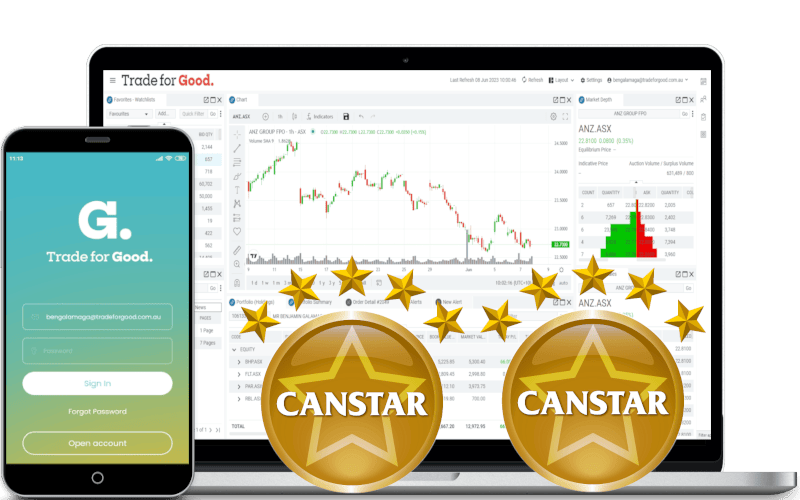Swing Trading Strategy

Swing trading is a trading strategy focused on capturing short- to medium-term gains in a stock or other financial asset over a period of a few days to several weeks. Swing traders primarily rely on technical analysis to identify potential price movements, but they may also use fundamental analysis to supplement their decisions. The goal is to capitalize on “swings” in the market by entering positions when a price trend is likely to change direction and exiting when the movement has run its course.
Key Characteristics
Time Frame: Swing traders typically hold positions for a few days to several weeks, aiming to profit from short-term price movements within a larger trend.

Trend-Following and Reversal Trading: Traders aim to catch market swings by entering trades during brief periods of consolidation or pullbacks within an established trend or by capitalizing on potential reversals.

Technical Indicators: Swing traders use indicators like moving averages, relative strength index (RSI), Fibonacci retracement levels, and candlestick patterns to time their trades.

Risk Management: Setting stop-loss orders is essential in swing trading to limit potential losses if the market moves in the opposite direction of the trade.

Tools and Techniques
- Chart Patterns: Swing traders rely heavily on chart patterns such as head and shoulders, flags, and triangles to spot potential entry and exit points.
- Volume Analysis: Analyzing trading volume helps confirm the strength of a price movement, providing additional confidence when entering or exiting a trade.
- Support and Resistance Levels: These key price levels help traders identify where an asset might reverse direction or continue its trend.

Pros
- Requires less time commitment than day trading, as trades are held for several days or weeks.
- Allows traders to benefit from both rising and falling markets by going long or short.

Cons
- Overnight risk is a concern, as positions are held for multiple days and are vulnerable to news or events that can impact prices outside of market hours.
- Requires discipline and patience, as trades can take time to develop.

Swing Trading Tools
Swing traders rely on various tools to identify trends, time their trades, and manage risk effectively. These tools help them analyze market conditions and make informed decisions for short- to medium-term trades. Here are some of the key tools used by swing traders:
-
Charting Software Indicators
Read MoreFor technical analysis, check the video for our charting tools below:
- Bollinger Bands: Help identify volatility and overbought/oversold conditions.
- Moving Averages: Used to smooth out price data and identify trends.
- Relative Strength Index (RSI): Measures the speed and change of price movements.
- MACD (Moving Average Convergence Divergence): A trend-following indicator that shows the relationship between two moving averages and signals potential trend reversals.
- Fibonacci Retracement: Helps identify potential support and resistance levels based on percentage retracement levels within a price trend.Volume Indicators
- On-Balance Volume (OBV): Measures buying and selling pressure, helping traders confirm trends or predict reversals.
- Volume: Shows how much volume has been traded at each price level, providing insight into key price points where supply or demand is concentrated.
-
Trade Execution Tools
Read MoreSpeed and accuracy in order execution are crucial, check the video for our trade tools below:
- Direct Market Access (DMA): Allows traders to place orders directly on the exchange.
- Order Management Systems (OMS): Helps in managing and tracking trades.
Buy Orders
- Stop-Loss Orders: Swing traders use stop-loss orders to limit potential losses by automatically exiting trades when the price moves against their position beyond a certain threshold.
- Take-Profit Orders: These orders allow traders to lock in profits by automatically closing a trade once a specific profit target is reached.
Sell Orders
-
Fundamental Analysis Tools
Read MoreFor fundamental analysis, check the video for our fundamental tools below:
- Economic Calendars: Swing traders monitor economic calendars to stay informed about important events like earnings reports, central bank meetings, or economic data releases that could influence market conditions.
- Company Financials: Traders use fundamental analysis to assess a company’s earnings, revenue, and growth potential, especially when trading stocks.
-
Risk Management Tools
Read MoreTo protect your capital, check the video for our stop loss tools below:
- Stop-Loss Orders: Automatically sell a security when it reaches a certain price.
-
Alert Tools
Read MoreTo be alerted to price or news alerts, check the video for alert tools below:
- Price Alerts: Traders set price alerts to notify them when an asset reaches a specific price level, allowing them to react quickly to changes in market conditions.
-
Educational Resources
Read MoreEducational materials to deepen understanding of position trading strategies and techniques like in the Trade for Good Learn section, click here.
The Bottom Line

What you learn here has been used in our Trade for Good software.
Click on the button to find our software education videos.
You can read more of our educational articles in the Trade for Good Learn section
Trade for Good Learn



